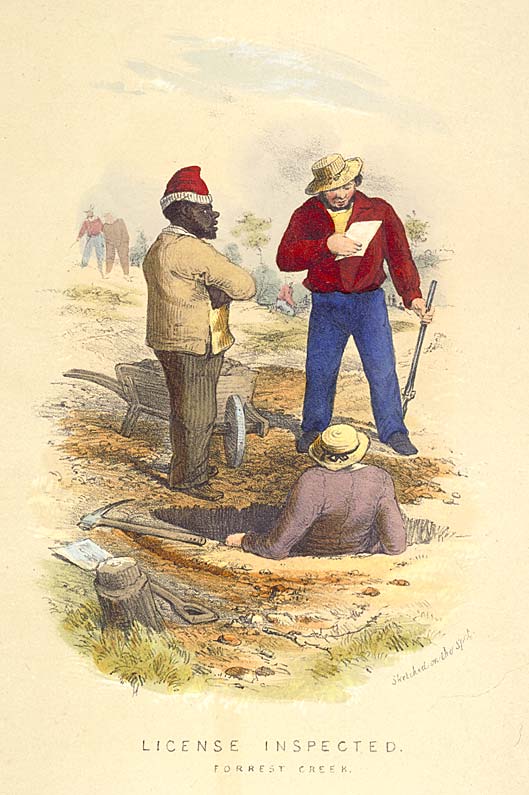 'License inspected, Forrest Creek', 1853
'License inspected, Forrest Creek', 1853
TLF ID R4402
This is a hand-coloured lithograph of 'License [licence] inspected, Forrest [Forest] Creek', a watercolour by S T Gill. It was printed as a plate in part one of 'The Victoria gold diggings and diggers as they are', published in London in 1853. The drawing depicts a man holding a rifle in one hand and a mining licence in the other. Two miners are watching him. One is standing at ground level with his arms crossed, while the other, standing in a recently dug hole, leans back on his elbows, appearing unperturbed that the licence is being inspected. Nearby are a pick and shovel, a wooden wheelbarrow full of dirt, and the stump of a medium-sized tree. In the background other miners can be seen.
